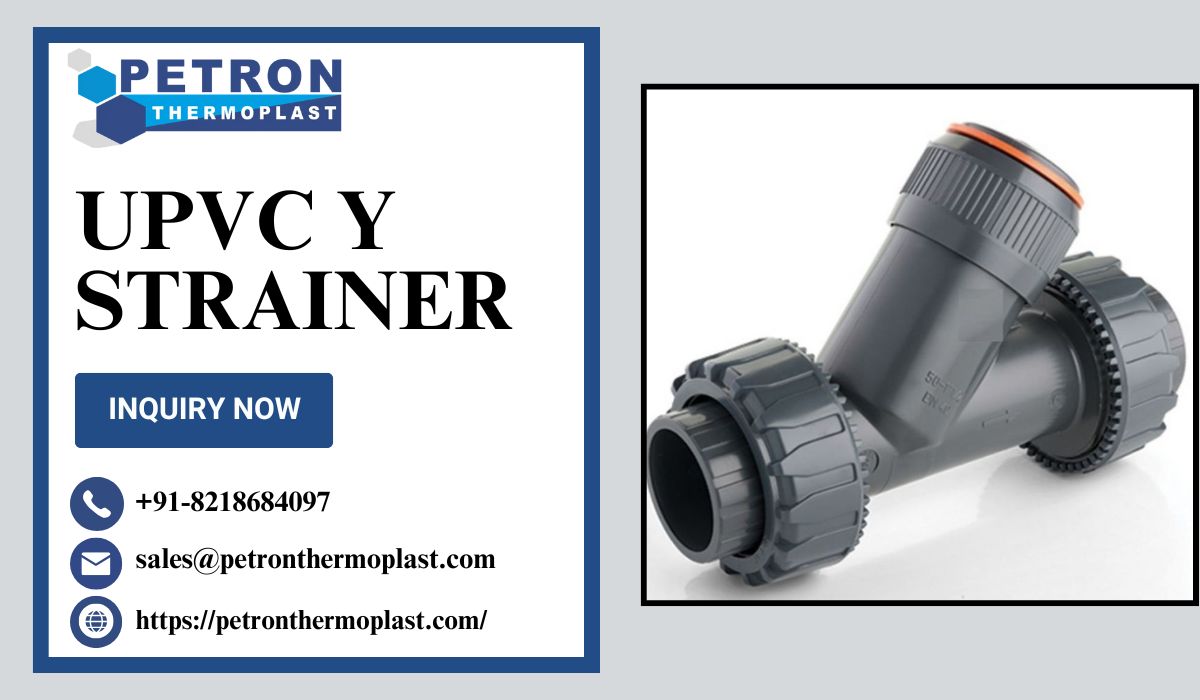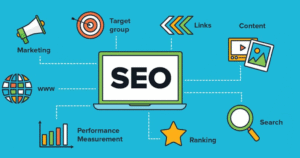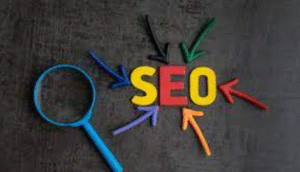UPVC Y Strainer – Improve Fluid Filtration Efficiency
In any industrial or commercial piping system, maintaining clean and uninterrupted fluid flow is critical. Unwanted debris, particles, or solids...

In any industrial or commercial piping system, maintaining clean and uninterrupted fluid flow is critical. Unwanted debris, particles, or solids can cause serious damage to pumps, valves, and other downstream components. This is where a UPVC Y Strainer plays a vital role. Known for its chemical resistance, lightweight design, and easy maintenance, the UPVC Y Strainer is a dependable choice for improving fluid filtration efficiency in water treatment, chemical processing, and many other applications. In this article, we’ll explore how a UPVC Y Strainer enhances filtration performance, its key benefits, common applications, and important considerations for selecting the right strainer for your system.
What is a UPVC Y Strainer?
A UPVC Y Strainer is a mechanical device used in piping systems to filter out unwanted solid particles from liquids or gases. Shaped like the letter “Y,” this strainer features a mesh or perforated screen inside its angled branch that traps debris while allowing clean fluid to pass through. The material used—Unplasticized Polyvinyl Chloride (UPVC)—offers exceptional resistance to corrosion and chemical attack, making it ideal for harsh and demanding environments.
How a UPVC Y Strainer Improves Fluid Filtration Efficiency?
A UPVC Y Strainer improves filtration efficiency by:
Preventing Contamination
It removes dirt, scale, rust, and other particulates from fluids, ensuring only clean media reaches the critical components of your system.
Protecting Downstream Equipment
By filtering out debris, Y strainers protect sensitive components like pumps, flow meters, valves, and control instruments from clogging or wear and tear.
Maintaining Consistent Flow
Clog-free piping systems ensure consistent fluid flow, reduce pressure drops, and increase overall system efficiency.
Reducing Maintenance
When strainers catch debris early in the flow path, the risk of equipment failure and unplanned shutdowns is significantly minimized.
Key Features of UPVC Y Strainers
Here are the standout features that make UPVC Y Strainers highly effective:
- Corrosion Resistance
UPVC is inherently resistant to a wide range of corrosive chemicals, including acids, alkalis, and salts. This makes the strainer suitable for aggressive chemical and wastewater systems.
- Lightweight Design
Unlike metal strainers, UPVC versions are easy to handle, install, and transport. They don’t require heavy support structures or lifting equipment.
- Clear Body Option
Many UPVC Y strainers come with transparent or clear sections that allow visual inspection of the filter screen without dismantling the unit.
- Reusable Screens
Strainers are fitted with stainless steel or plastic mesh screens that can be removed, cleaned, and reused—enhancing their lifecycle and reducing operating costs.
- Threaded or Socket Ends
Available in different connection types like threaded, solvent weld, or flanged ends to match your piping system.
Common Industrial Applications of UPVC Y Strainers
Due to their durability and chemical resistance, UPVC Y strainers are used in a wide range of industrial and commercial sectors:
🌊 Water Treatment Plants
Filters sediment and suspended particles in potable water, process water, and wastewater.
🏭 Chemical Processing
Used in corrosive fluid lines where metal components would quickly degrade.
🚿 Irrigation Systems
Protects sprinklers and drip emitters from debris that can cause clogs.
🍶 Food & Beverage Industry
Ensures particle-free flow of water and cleaning agents in hygiene-sensitive applications.
🧪 Laboratories and Pharmaceutical Systems
Ideal for ultrapure water systems due to UPVC’s non-toxic and inert properties.
Advantages of Choosing UPVC Y Strainer Over Metal Strainers
| UPVC Y Strainer | Metal Y Strainer |
| Lightweight and easy to handle | Heavy and needs lifting support |
| Corrosion-resistant in chemical use | Prone to rust and chemical attack |
| Cost-effective and reusable | Higher initial and maintenance cost |
| Non-conductive and safe | Conducts electricity, needs grounding |
| Minimal scaling and fouling | Susceptible to scale buildup |
How to Install a UPVC Y Strainer?
Proper installation is key to maximizing performance:
- Ensure the flow direction matches the arrow on the strainer body.
- Install the Y strainer horizontally with the screen facing downward for best debris collection.
- Use compatible fittings (solvent cement, thread tape) for leak-proof connections.
- Allow enough space for maintenance, especially for cleaning or replacing the screen.
- Periodically inspect and clean the mesh to avoid clogging or pressure drops.
Maintenance Tips for Long-Term Use
- Clean the mesh screen regularly to prevent clogging and flow restriction.
- Inspect the gasket and seals for wear and replace if necessary.
- Flush the strainer after extended downtime or before major equipment starts.
- Keep spare filter elements ready for fast replacement.
Choosing the Right UPVC Y Strainer
When selecting a UPVC Y Strainer, consider:
- Chemical compatibility of the strainer body and mesh screen.
- Size and flow rate of your pipeline system.
- Operating temperature and pressure range.
- Required mesh size to capture your specific contaminants.
- Connection type matching your existing pipe network.
Conclusion
The UPVC Y Strainer is a smart and reliable choice for improving fluid filtration efficiency in various industrial systems. It not only protects critical equipment but also ensures smooth, uninterrupted fluid flow. Whether you operate in water treatment, chemical processing, or general industry, integrating a UPVC Y Strainer into your pipeline can significantly reduce maintenance costs, extend equipment life, and boost operational efficiency. Looking for the best UPVC Y Strainer for your application? Choose Petron Thermoplast for high-quality products from a trusted manufacturer that understands industrial demands.




